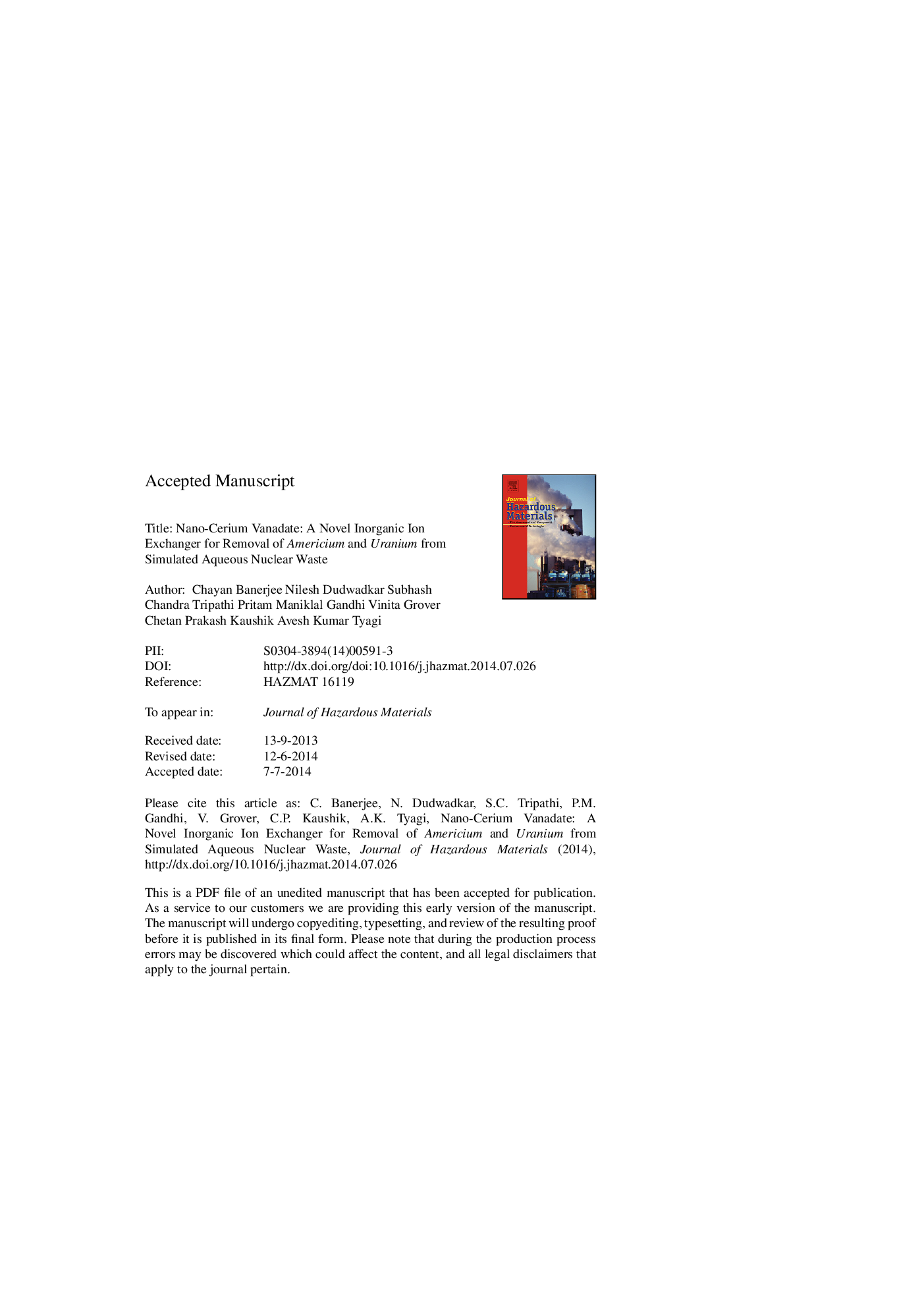| Article ID | Journal | Published Year | Pages | File Type |
|---|---|---|---|---|
| 6971260 | Journal of Hazardous Materials | 2014 | 27 Pages |
Abstract
Cerium vanadate nanopowders were synthesized by a facile low temperature co-precipitation method. The product was characterized by X-ray diffraction and transmission electron microscopy and found to consist of â¼25 nm spherical nanoparticles. The efficiency of these nanopowders for uptake of alpha-emitting radionuclides 233U (4.82 MeV α) and 241Am (5.49 MeV α, 60 keV γ) has been investigated. Thermodynamically and kinetically favorable uptake of these radionuclides resulted in their complete removal within 3 h from aqueous acidic feed solutions. The uptake capacity was observed to increase with increase in pH as the zeta potential value decreased with the increase in pH but effect of ionic strength was insignificant. Little influence of the ions like Sr2+, Ru3+, Fe3+, etc., in the uptake process indicated CeVO4 nanopowders to be amenable for practical applications. The isotherms indicated predominant uptake of the radioactive metal ions in the solid phase of the exchanger at lower feed concentrations and linear Kielland plots with positive slopes indicated favorable exchange of the metal ions with the nanopowder. Performance comparison with the other sorbents reported indicated excellent potential of nano-cerium vanadate for removing americium and uranium from large volumes of aqueous acidic solutions.
Related Topics
Physical Sciences and Engineering
Chemical Engineering
Chemical Health and Safety
Authors
Chayan Banerjee, Nilesh Dudwadkar, Subhash Chandra Tripathi, Pritam Maniklal Gandhi, Vinita Grover, Chetan Prakash Kaushik, Avesh Kumar Tyagi,
